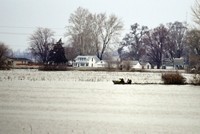Advertisement
Grab your lab coat. Let's get started
Welcome!
Welcome!
Create an account below to get 6 C&EN articles per month, receive newsletters and more - all free.
It seems this is your first time logging in online. Please enter the following information to continue.
As an ACS member you automatically get access to this site. All we need is few more details to create your reading experience.
Not you? Sign in with a different account.
Not you? Sign in with a different account.
ERROR 1
ERROR 1
ERROR 2
ERROR 2
ERROR 2
ERROR 2
ERROR 2
Password and Confirm password must match.
If you have an ACS member number, please enter it here so we can link this account to your membership. (optional)
ERROR 2
ACS values your privacy. By submitting your information, you are gaining access to C&EN and subscribing to our weekly newsletter. We use the information you provide to make your reading experience better, and we will never sell your data to third party members.
Business
Crop Protection: Watching Out For El Niño
by Jean-François Tremblay
January 11, 2010
| A version of this story appeared in
Volume 88, Issue 2
Companies in the crop protection business are generally wont to stress the rosy business prospects ahead of them. Long-term demand for their products is fueled by the rise in incomes and populations worldwide, higher production of biofuels, and the finite area of cultivable land on the planet.
COVER STORY
Crop Protection: Watching Out For El Niño
On a year-to-year basis, however, the future is far less predictable. The age-old question of what kind of weather the year will bring always hangs over the business. During a drought, farmers are likely to put fewer seeds into the ground and spend less protecting what they do plant.
Amid high prices for major commercial crops, the past two years have been very good for suppliers of agrochemicals and seeds. Although sales at major crop protection product firms mostly slipped in the first three quarters of 2009, this came after an exceptionally strong 2008. That year, sales at leading Swiss firm Syngenta surged by 21%. In the fiscal year that ended March 31, 2009, Sumitomo Chemical expanded sales in its agrochemical segment by 11%.
In 2010, weather in the Northern Hemisphere will be the big story to follow. After three years of higher than usual rainfalls in Europe and North America, droughts are likely to follow, says Gautam Sirur, principal consultant at crop protection market research firm Cropnosis.
“We’ve had two years of drought in the Southern Hemisphere,” Sirur says. “Normally, the El Niño cycle breaks that pattern. You get heavy rainfall in Latin America and Australia, and drought in North America, Europe, and parts of Asia.” Typically, he says, by the time drought hits North America and Europe, most crops have been planted, and farmers spend less on insecticides and fungicides. In Asia, drought occurs before planting gets under way, so fewer seeds will be planted, he expects.
Weather is more than just a seasonal story for the crop protection business, Sirur points out. Worldwide, more water shortages are taking place, he says, and seed suppliers have been busy trying to develop crop strains that can thrive on less water. Because the needs of farmers keep changing, Sirur expects companies that come up with innovative crop protection products will continue to have the upper hand over manufacturers of generic products.
At Sumitomo, a spokesman reports that the 2010 outlook for the whole industry is sunny, and not just because of the weather. “Taking into account future climate changes, agrochemicals are essential for producing a stable supply of crops efficiently,” he says. “All companies will probably continue to see strong revenues in 2010.”





Join the conversation
Contact the reporter
Submit a Letter to the Editor for publication
Engage with us on Twitter